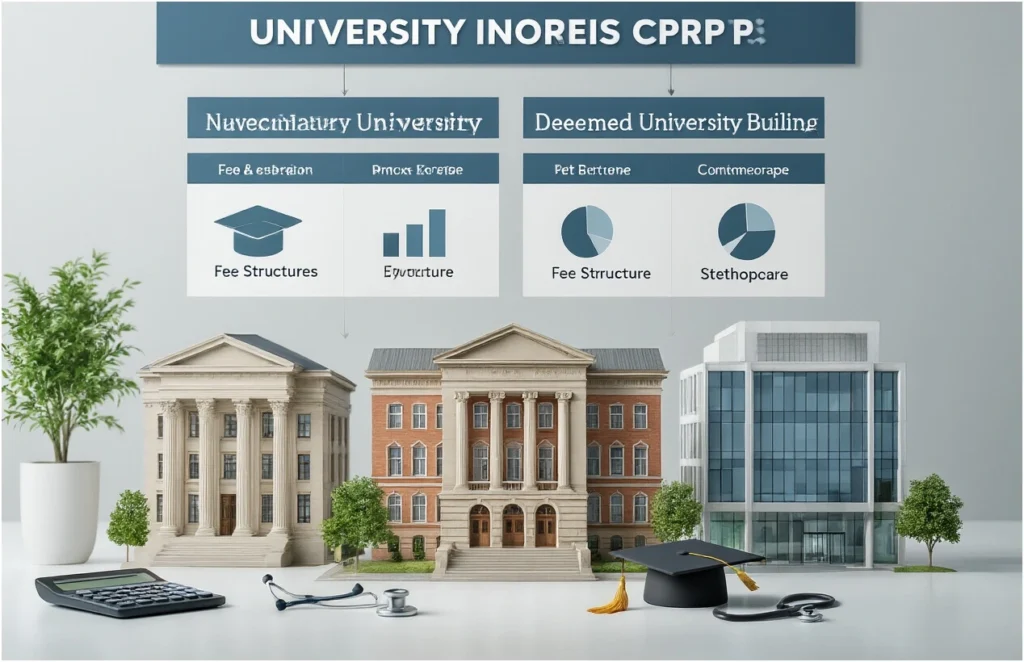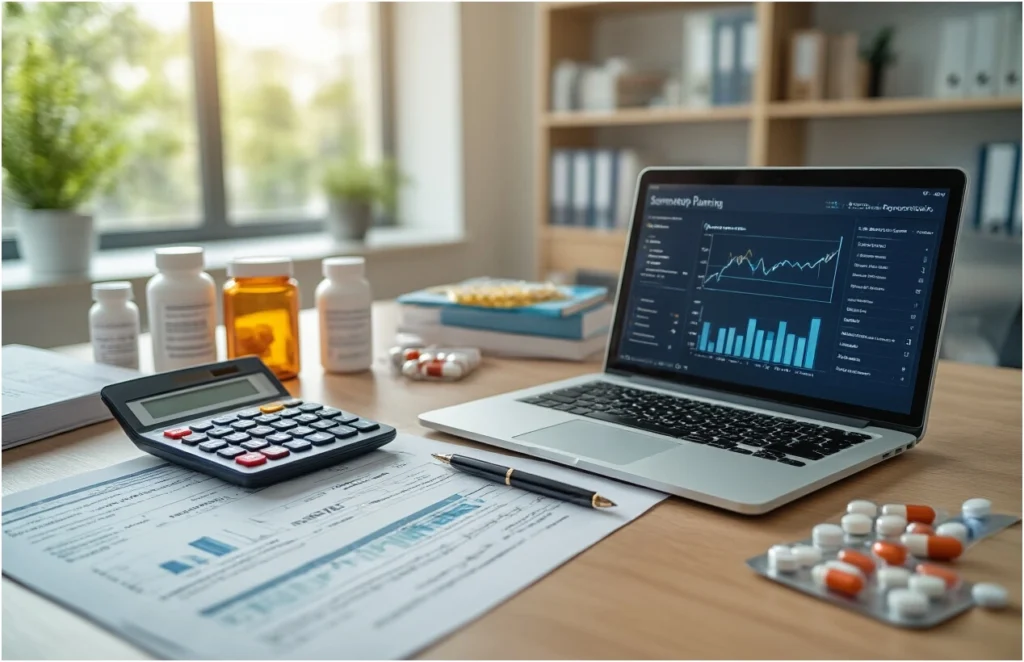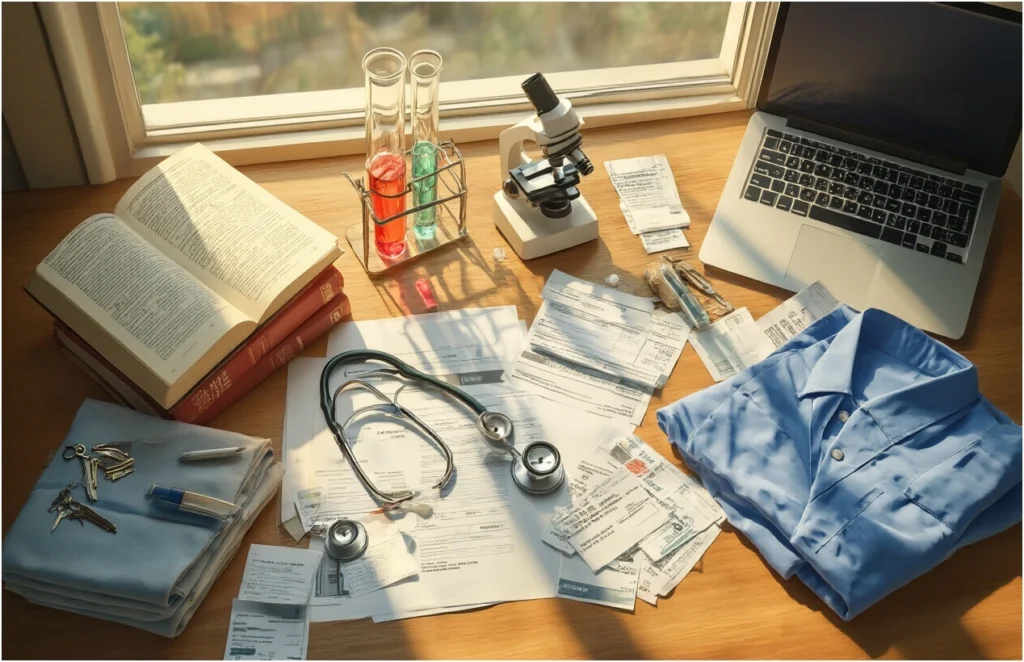Doctor of Pharmacy (Pharm. D) – Shifa College of Pharmaceutical Sciences
| SCPS Fee Structre for Pharm.D Program 2025-26 | ||||||
| Heads | Payment Schedule | 1st Binnual | 2nd Binnual | For Foreign Students | ||
| Prospectus fee | At the time of seeking admission | 2,100 | – | Admission fee | $ 315 | USD |
| Application / test fee | 3,200 | – | Tuition fee | $ 6,534 | USD | |
| Admission fee | One time Charges | 35,000 | – | Security fee | 13650 | PKR |
| University Registration Fee | 13,500 | – | Pharmacy Council fee | 2,000 | PKR | |
| Security (Refundable) | 13,500 | – | ||||
| Pharmacy Council Reg. | 2,000 | – | ||||
| Enrollment fee | Recurring fee Biannual | 7,900 | 7,900 | |||
| Tuition Fee | 302,500 | 302,500 | ||||
| Examination fee | 8,400 | 8,400 | ||||
| Co-Curricular Activities Fee | 1,400 | 1,400 | ||||
| Medical Check Up for Clinical rotations at SIH | To be Collected in 3rd , 4th , and 5th Year | 7,300 | – | |||
| Research Project Supervision | To be Collected in 5th Year | 13,500 | – | |||
| Transcript Fee | One time Charges | 5,250 | – | |||
| Degree Fee | 9,100 | – | ||||
| Graduation Fee | 9,800 | – | ||||
| Incidental Case | ||||||
| Revised / Duplicate Transcript Fee | Fee Admissible in Case needed | 5,250 | – | |||
| Revised / Duplicate Degree Fee | 9,100 | – | ||||
| Degree / Transcript Verification Fee | 2100 (Local Applicants) 70 USD ( International Applicants) | – | ||||
| Retotaling Fee | 7,000 | – | ||||
| No Objection Certificate (NOC) | 3,150 | – | ||||
| Transfer / Migration Fee | 7,000 | – | ||||
| * Fee and charges shall be subject to review and revision as may be prescribed by the University from time to time. Fee challan will be issued biannually. | ||||||
| # Only exam fee for the remedial (2nd Annual Exam in case of failure) shall be charged Rs. 16800/-. | ||||||
Doctor of Pharmacy (Pharm. D) Fee Structure 2025-2026
Doctor of Pharmacy (Pharm. D) Fee Structure 2025-2026
Planning to become a pharmacist? The Doctor of Pharmacy (Pharm. D) fee structure 2025-2026 varies dramatically across universities, states, and program types. This guide helps aspiring pharmacy students, parents, and career changers understand the complete cost breakdown before making this significant investment.
We’ll break down average fees across government and private institutions, explain semester-wise payment options that can ease your financial burden, and explore additional costs like lab fees and clinical rotations that many students overlook. You’ll also discover regional fee differences between states and learn about financial aid opportunities that could reduce your overall expenses.
Understanding Pharm.D Program Structure and Duration

Post-Baccalaureate Pharm.D Programs
Post-baccalaureate Pharm.D programs serve students who already hold a bachelor’s degree and want to transition into pharmacy practice. These accelerated programs typically span three to four years, depending on the institution and prerequisite coursework completion. Students entering these programs must have completed specific undergraduate courses in chemistry, biology, physics, and mathematics, creating a foundation for advanced pharmaceutical sciences.
The curriculum structure focuses intensively on pharmaceutical sciences, pharmacotherapy, and clinical practice without general education requirements. This streamlined approach allows working professionals or career changers to enter the pharmacy field more quickly. Many programs offer flexible scheduling options, including evening, weekend, or hybrid formats to accommodate students with existing professional or family commitments.
Direct Entry Pharm.D Programs
Direct entry programs, also called pre-pharmacy plus professional programs, span six years total and accept students straight from high school. The first two years cover prerequisite coursework including general chemistry, organic chemistry, biology, physics, calculus, and liberal arts requirements. Students then advance to the four-year professional pharmacy curriculum.
These programs provide seamless progression from undergraduate prerequisites to professional studies, eliminating the uncertainty of competitive admission after completing prerequisites elsewhere. Many institutions guarantee admission to the professional phase for students maintaining specified grade point averages and meeting other requirements during the prerequisite phase.
| Program Type | Total Duration | Prerequisites | Target Students |
| Post-Baccalaureate | 3-4 years | Bachelor’s degree + specific courses | Career changers, working professionals |
| Direct Entry | 6 years | High school diploma | Recent high school graduates |
Clinical Training Requirements
Clinical training represents a crucial component of Pharm.D education, typically comprising the final 1-2 years of the program. Students complete Advanced Pharmacy Practice Experiences (APPEs) totaling at least 1,440 hours across various healthcare settings. These rotations expose students to community pharmacy, hospital pharmacy, ambulatory care, and specialized practice areas like cardiology, infectious diseases, or pediatrics.
Introductory Pharmacy Practice Experiences (IPPEs) occur earlier in the curriculum, providing 300 hours of hands-on experience in community and institutional settings. These experiences bridge classroom learning with real-world pharmacy practice, allowing students to apply theoretical knowledge while developing patient communication skills and professional judgment.
Clinical training locations vary by program but typically include community pharmacies, hospitals, clinics, long-term care facilities, and specialized healthcare centers. Students work under licensed pharmacist supervision, gradually taking on more responsibility as their competence develops.
Credit Hour Distribution
Pharm.D programs require approximately 140-170 credit hours for graduation, distributed across pharmaceutical sciences, clinical sciences, and practice experiences. The curriculum typically allocates 40-50% of credits to pharmaceutical sciences including pharmacology, medicinal chemistry, pharmaceutics, and pharmacokinetics. Clinical sciences and therapeutics account for 30-40% of credits, covering disease state management, pharmacotherapy, and patient assessment.
Practice experiences represent 20-25% of total credits through IPPEs and APPEs. Additional credits cover pharmacy law, ethics, business principles, and communication skills. The exact distribution varies by institution, but accreditation standards ensure all programs meet minimum requirements for each content area.
Most programs follow a lock-step curriculum where students progress through courses in predetermined sequences. This structure ensures students build foundational knowledge before advancing to complex clinical applications and practice experiences.

Average Fee Structure Across Different University Types
Government University Fee Breakdown
Government universities consistently offer the most affordable pathway to earning a Pharm.D degree. Annual tuition fees typically range from ₹15,000 to ₹40,000, making them accessible to students from diverse economic backgrounds. These institutions receive substantial funding from state and central governments, allowing them to keep fees remarkably low.
The fee structure includes several components:
- Tuition fees: 2,000-30,000 per year
- Registration and examination fees: 2,000-5,000
- Laboratory fees: 1,000-3,000
- Library and other miscellaneous charges: 500-2,000
Top government institutions like Jamia Hamdard University and Government College of Pharmacy in various states maintain fees below ₹25,000 annually. Reservation benefits apply for SC/ST and OBC students, often reducing fees by 50-100%. Many government universities also offer fee waivers for economically disadvantaged students through merit-cum-means scholarships.
| Fee Component | Government Universities (₹) |
| Annual Tuition | 15,000 – 40,000 |
| Registration | 1,500 – 3,000 |
| Laboratory | 1,000 – 3,000 |
| Total Annual | 17,500 – 46,000 |
Private University Tuition Costs
Private universities charge significantly higher fees, reflecting their superior infrastructure, modern facilities, and industry connections. Annual fees range from ₹80,000 to ₹3,50,000, varying based on university reputation and location.
Premium private institutions command the highest fees:
- Manipal College of Pharmaceutical Sciences: ₹2,50,000-₹3,00,000
- SRM University: ₹1,80,000-₹2,20,000
- VIT University: ₹1,50,000-₹2,00,000
- Regional private colleges: ₹80,000-₹1,50,000
Private universities often provide value through:
- State-of-the-art laboratories and research facilities
- Industry partnerships and internship opportunities
- Smaller class sizes and personalized attention
- Modern hostel facilities and campus amenities
- Placement assistance with pharmaceutical companies
Many private institutions offer early bird discounts, sibling concessions, and merit-based scholarships that can reduce overall costs by 10-30%. Payment flexibility includes semester-wise installments and education loan tie-ups with banks.
| University Category | Fee Range (₹/year) | Key Features |
| Premium Private | 2,50,000 – 3,50,000 | Top facilities, industry links |
| Mid-tier Private | 1,50,000 – 2,50,000 | Good infrastructure, placements |
| Regional Private | 80,000 – 1,50,000 | Basic facilities, local focus |
State University Pricing Models
State universities bridge the gap between government and private institutions, offering moderate fees while maintaining quality education standards. Annual fees typically range from ₹50,000 to ₹1,20,000, varying significantly based on state policies and university funding models.
Different states adopt distinct pricing strategies:
High-fee states (₹80,000-₹1,20,000):
- Maharashtra, Karnataka, Tamil Nadu
- Better infrastructure investment
- Industry-oriented curriculum
Moderate-fee states (₹50,000-₹80,000):
- Rajasthan, Gujarat, Andhra Pradesh
- Balanced approach to affordability and quality
Low-fee states (₹30,000-₹50,000):
- Uttar Pradesh, Bihar, West Bengal
- Government subsidies keep costs down
State universities often provide additional benefits like domicile reservations, where 85% seats are reserved for state residents at reduced fees. Out-of-state students may pay 20-50% higher fees. Many state universities have established pharmaceutical research parks and industry collaborations, enhancing practical learning opportunities.
The pricing model usually includes development fees, which fund infrastructure improvements and technology upgrades. Some states implement sliding fee structures based on family income, making education more accessible to middle-class families who don’t qualify for government university seats but cannot afford private institution fees.
Semester-wise Fee Payment Plans
Annual Payment Options and Discounts
Most pharmacy schools offer significant savings for students who can pay their annual tuition upfront. These discounts typically range from 3% to 8% off the total yearly fees, which can translate to savings of ₹15,000 to ₹40,000 per year depending on the institution. Private universities often provide more generous early payment discounts compared to government institutions.
Students choosing annual payment plans usually receive additional perks like priority registration for electives, reserved hostel accommodations, and waived processing fees. Some universities also extend payment deadlines by 15-30 days for annual payers without penalties.
Installment Payment Schedules
The standard semester-wise payment structure divides annual fees into two equal installments, with payments due before the start of each semester. Many institutions have adopted more flexible approaches, offering quarterly or even monthly payment options to accommodate diverse financial situations.
| Payment Schedule | Number of Installments | Processing Fee | Typical Due Dates |
| Semester-wise | 2 per year | Waived | July, December |
| Quarterly | 4 per year | ₹500-1,000 | July, October, January, April |
| Monthly | 10 per year | ₹200-500 per month | 5th of each month |
Some universities allow students to customize their payment schedules based on family income patterns. Agricultural families, for instance, might align payments with harvest seasons, while salaried families might prefer monthly deductions.
Late Fee Penalties and Grace Periods
Universities typically provide a grace period of 15-30 days after the fee deadline before imposing penalties. Late fee structures vary significantly, with government institutions charging ₹50-100 per day, while private colleges may impose ₹200-500 daily penalties.
Most institutions cap maximum late fees at 5-10% of the semester fee to prevent excessive financial burden. Students facing genuine hardships can often negotiate extended grace periods through formal applications to the fee committee, especially if they maintain good academic standing.
Repeat offenders might face additional consequences like library restrictions, examination holds, or mandatory advance payments for subsequent semesters. Some universities offer amnesty periods during festivals or emergencies where late fees are waived temporarily.
Financial Aid Integration with Payment Plans
Scholarship recipients often have customized payment schedules that account for aid disbursement timelines. Merit scholarships are usually credited directly to student accounts before fee deadlines, while need-based aid might require students to pay initially and receive reimbursements later.
Educational loan integration allows students to defer payments until loan processing completes, typically within 45-60 days of application. Banks often coordinate directly with universities to streamline this process, reducing paperwork and processing delays for students.
Work-study programs enable students to offset fees through campus employment, with earnings automatically credited toward outstanding balances. These programs typically cover 20-40% of total fees while providing valuable pharmaceutical industry experience through hospital or research partnerships.
Additional Costs Beyond Tuition Fees

Laboratory Equipment and Supplies
Pharm.D programs require specialized equipment and supplies that can add $2,000-$4,000 annually to your education costs. You’ll need a professional-grade stethoscope ($200-$500), blood pressure monitors, and various diagnostic tools for clinical training. Laboratory supplies include protective equipment, gloves, safety goggles, and lab coats that meet pharmacy practice standards.
Digital tools have become essential, with tablet devices or laptops specifically configured for pharmacy software ranging from $800-$1,500. Many programs also require access to specialized pharmacy management systems and drug interaction databases, which can cost $300-$600 per year for student licenses.
Compounding lab supplies represent another significant expense, including measuring devices, mixing equipment, and specialty chemicals for pharmaceutical preparation practice. These materials typically cost $500-$800 per semester, depending on the program’s emphasis on compounding pharmacy skills.
Clinical Rotation Expenses
Clinical rotations bring unique financial challenges that many students underestimate. Transportation costs can reach $3,000-$6,000 annually, especially when rotations are located far from campus or require multiple site visits throughout the week. Some students need temporary housing near rotation sites, adding $500-$1,200 monthly to living expenses.
Professional attire requirements for hospital and pharmacy settings often demand a complete wardrobe overhaul. White coats, professional shoes, and appropriate business attire can cost $800-$1,500 initially, with ongoing replacement and cleaning expenses.
Background checks and drug screenings are mandatory for most clinical sites, typically costing $100-$300 per rotation cycle. Health requirements, including updated vaccinations, physical exams, and TB testing, can add another $400-$800 annually. Some rotations also require specific training certifications or CPR renewal, each costing $50-$200.
Professional Licensing Exam Fees
The path to pharmacy licensure involves multiple examinations with substantial fees. The North American Pharmacist Licensure Examination (NAPLEX) costs $505, while the Multistate Pharmacy Jurisprudence Examination (MPJE) requires an additional $200 per state where you seek licensure.
Many students take preparatory courses for these high-stakes exams, with comprehensive review programs ranging from $1,500-$3,500. Practice exams and study materials add another $300-$600 to preparation costs. Students who need to retake exams face additional fees and extended preparation periods.
State licensing application fees vary significantly, typically ranging from $75-$400 depending on your chosen practice location. Some states also require continuing education credits before initial licensure, which can cost $200-$500.
Textbooks and Digital Resources
Pharmacy education demands extensive reference materials that represent a major ongoing expense. Core textbooks like Goodman & Gilman’s Pharmacological Basis of Therapeutics, DiPiro’s Pharmacotherapy, and specialized drug reference guides can cost $300-$500 each when purchased new.
Digital subscriptions have become increasingly important, with platforms like Lexicomp, Facts & Comparisons, and specialized pharmacy databases requiring annual fees of $200-$400 per platform. Many programs recommend multiple database subscriptions for comprehensive drug information access.
| Resource Type | Annual Cost Range | Essential Level |
| Core Textbooks | $1,500-$2,500 | Critical |
| Digital Databases | $600-$1,200 | Critical |
| Reference Materials | $400-$800 | Important |
| Study Guides | $300-$600 | Helpful |
Used textbooks and rental options can reduce costs by 30-50%, but pharmacy references need frequent updates due to rapidly changing drug information and regulations. E-book versions often cost 20-30% less than physical copies and offer convenient search functionality.
Professional Development and Conference Costs
Active participation in pharmacy organizations and conferences provides valuable networking opportunities but requires significant investment. Student memberships in organizations like the American Pharmacists Association (APhA) or specialized groups cost $50-$150 annually, often including access to journals and continuing education materials.
Conference attendance represents a major expense, with registration fees ranging from $200-$800 for major pharmacy meetings. Travel, accommodation, and meal costs for multi-day conferences can easily reach $1,500-$3,000 per event. Many successful pharmacy students attend 2-3 conferences annually to build professional networks and stay current with industry developments.
Professional development courses, certification programs, and specialty training workshops add another layer of costs. Popular certifications like immunization training, medication therapy management, or specialty pharmacy credentials range from $300-$1,000 each, but significantly enhance career prospects and starting salary potential.
Semester-wise Fee Payment Plans
Annual Payment Options and Discounts
Most pharmacy schools offer significant savings for students who can pay their annual tuition upfront. These discounts typically range from 3% to 8% off the total yearly fees, which can translate to savings of ₹15,000 to ₹40,000 per year depending on the institution. Private universities often provide more generous early payment discounts compared to government institutions.
Students choosing annual payment plans usually receive additional perks like priority registration for electives, reserved hostel accommodations, and waived processing fees. Some universities also extend payment deadlines by 15-30 days for annual payers without penalties.
Installment Payment Schedules
The standard semester-wise payment structure divides annual fees into two equal installments, with payments due before the start of each semester. Many institutions have adopted more flexible approaches, offering quarterly or even monthly payment options to accommodate diverse financial situations.

